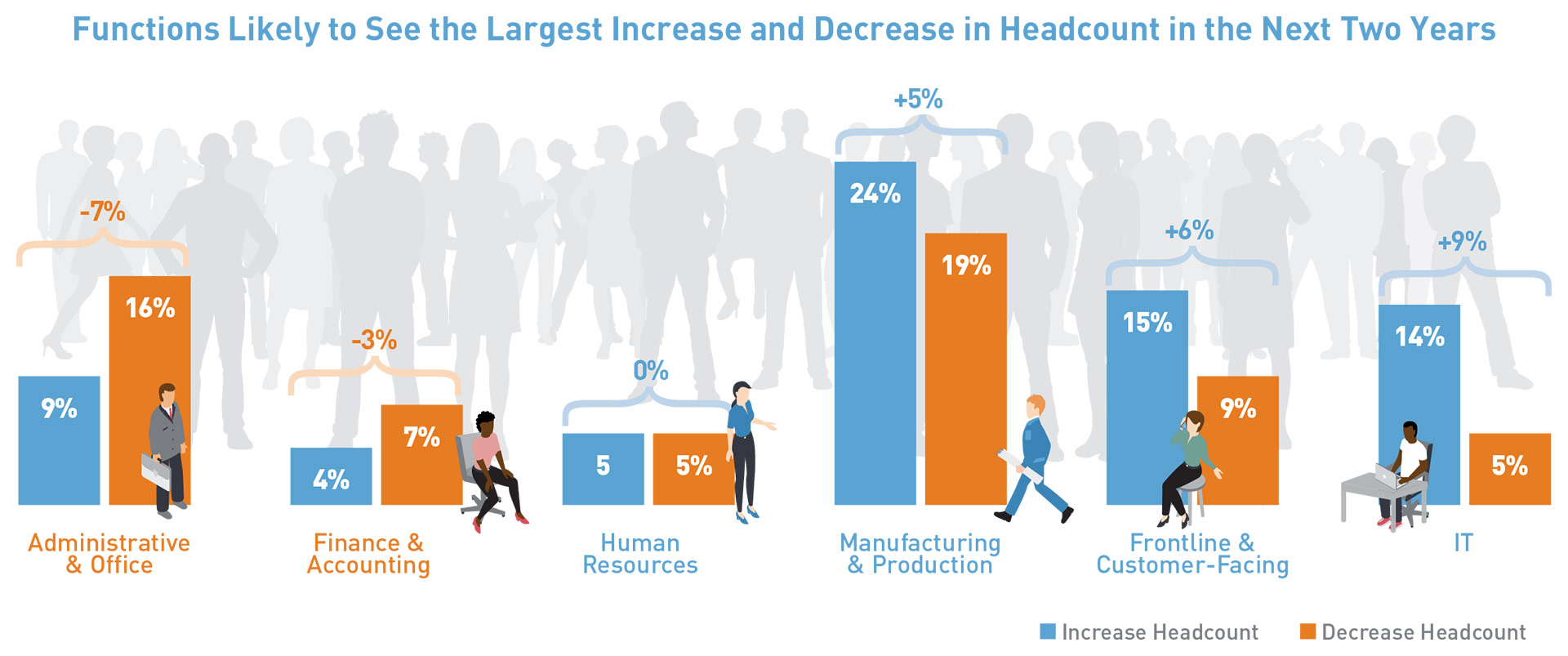Leading in the digital age

In previous Industrial Revolutions, organisations had the luxury of time to redefine processes and take advantage of technology as it developed. Now, organisations have as little as six months to change, or risk losing ground to more agile competition.
However, whilst many companies are talking about digital transformation, it appears that it’s not as straightforward as some would suggest, with many high-profile failures in recent years. Although 89% of business leaders are planning, testing and implementing digital initiatives, only 47% of CEO’s have started digital transformation.
Organisations who have started these programmes of change have already begun to see a contribution to business growth, increasing profitability by up to 26% and receiving market valuations of up to 12% higher than their competition. And it’s likely that this trend will continue.
So, for the 53% of businesses who haven’t yet started their transformation – what is the best way to approach digital transformation and help to generate longer-term success for the organisation?
Taking the long-term view
Digital transformation is not a one-off project. Continuous innovation and change must become a core feature of the business, driving the organisation ahead of the competition and attracting the best talent.
Having the right leaders in place to oversee this process is essential, as change can cause friction amongst employees; impacting decisions, hampering progress and disengaging individuals. Driving the right behaviours and leading by example are key components to making the transformation a success.
Leaders must keep the business running smoothly with one hand whilst preparing for a different and uncertain future with the other. This will require regular monitoring and intervention to ensure that the transformation is heading in the right direction in all areas of the business, allowing the opportunity to course correct if needed.
Effective leadership
Creating a culture of innovation requires the right leadership – both today and in the future. And with 9 out of 10 HR leaders believing that their organisations don’t have the leadership talent required to drive digital transformation success, businesses need to upskill existing leaders and strengthen their talent pipelines to close the gap between traditional ideas of leadership effectiveness and what it takes to drive sustained performance improvements in the digital age.
But far from requiring a complete replacement of traditional leadership capabilities, businesses must simply apply the 80/20 rule. Eighty percent of the competencies and enablers that have contributed to an effective leader remain the same. Strong leadership skills should not to be underestimated.
The additional twenty percent of capabilities which have become critical for modern and future leaders can be strengthened through coaching and include:
- Accelerating performance by attracting and developing high potential talent
- Helping employees to understand the significance of their role in achieving the company’s goals
- Equipping mid-level leaders to foster innovation, take risks and manage difficult decisions
As well as attracting the right talent to your organisation, these skills will help today’s leaders nurture and retain their existing talent.
The ultimate partnership?
There is a lot of discussion around whether robots will take over our jobs and, whilst we may see certain roles being replaced by Artificial Intelligence (see graphic below), many areas will see major growth over the coming years.
To create the most efficient workforce, leaders must build a partnership approach between human and machine intelligence to create an inclusive, tech-enabled and forward-thinking company. This will allow businesses to harness the raw processing power and precision of technology, with the output analysed and contextualised by employees.
Implemented correctly, this partnership will mean that employees are able to forgo some of the more mundane administrative tasks, in favour of more creative and fulfilling activities. But change is never straightforward, and organisations will need to work hard to identify, nurture and develop their existing workforce and future leaders to amplify what is humanly possible in a digital world.
Joining the feedback loop
Finally, and perhaps most importantly, leaders undergoing digital transformation must be careful not to create an echo chamber of positive reinforcement for ideas. It’s essential that plans and concepts are socialised prior to committing investment, with a range of stakeholders. To drive the strongest results, feedback and insights should be gathered from customers, employees, investors – and even competitors.
This will help businesses to remain agile and fit for purpose, offering leaders insight into the market readiness for proposed changes and allow them to plot a digital transformation timeline. It will also help to ensure that products and services appeal to the audience they were designed for, which is key to a successful digital transformation.
Whilst digital does not stand in isolation as the sole driver of business performance, it will have a significant impact on the success or failure of a business. Going forwards, change must be a constant feature for organisations, with agility and continuous adaptation essential.
Want to find out more? Click here to read the full whitepaper.



